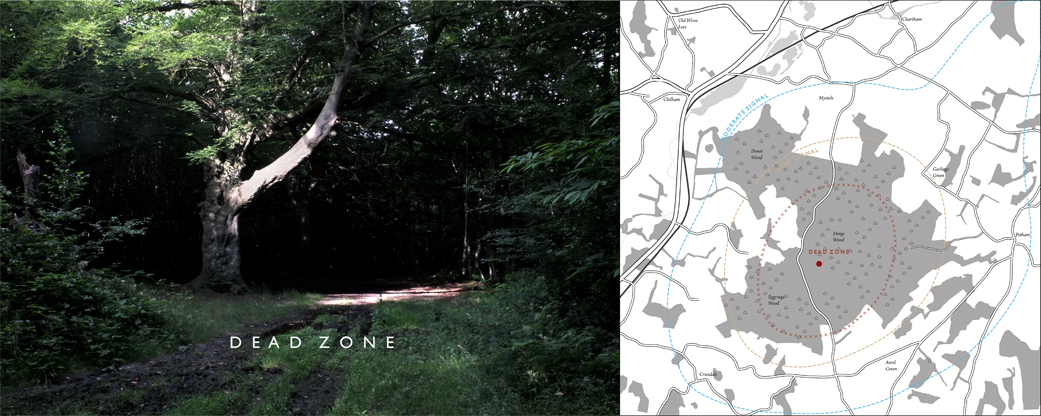
This series is part of an ongoing project based around the dead zones in the cell phone network. The aim is to provide a survey of the 'remoter' regions of the English landscape at the end of the 3G era - shortly before the next wave of cell phone technology begins to pave the way towards full signal coverage. The project has grown out of research of the picturesque photograph. The original Picturesque movement of the 18th century has been discussed as a reaction to the industrial revolution and this conception of picturesque as anti-industrial and resistant to change can be traced through to present day photographic forms. In this work the aesthetic concerns of landscape are set against the interests of technological advancement. Denge Wood is an area in Kent between Ashford and Canterbury where for some distance no cell phone signal is available. Images of the dead zone environs express an atmosphere of 'wilderness' but at the same time mark out topographical information - the tracts of land where the communications infrastructure requires improvement. In the work, the dead zone at the heart of Denge Wood takes on an almost mystical significance as the area where technological communication breaks down and some kind of alternative state seems to be represented. Seen in this way the work perhaps puts us in mind of Tarkovsky's Stalker or British science fiction movies of the 1950s and 60s where an innocent landscape is seen to be at risk from an outside threat.
| 3G Hinterland: Denge Wood | 3G Live Broadcast | And Then There Were None | Climbing Frames | Landscape with Ruin | Treasures | Bosson Heads | Home Comforts | Pattern and Symmetry |
